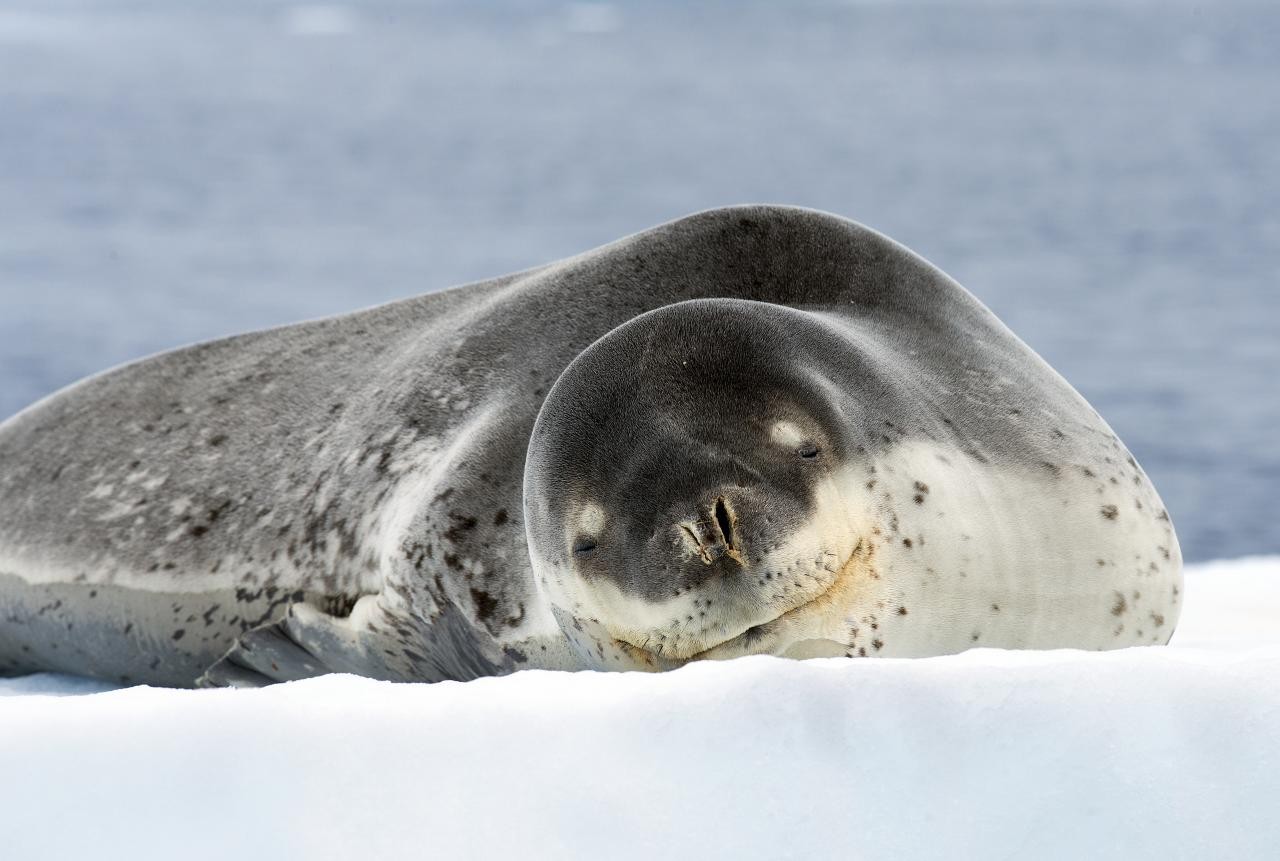Leopard seal
A species of Leopard seal Scientific name : Hydrurga leptonyx Genus : Leopard seal
Leopard seal, A species of Leopard seal
Scientific name: Hydrurga leptonyx
Genus: Leopard seal
Content
Description General Info
 Photo By Christopher Michel , used under CC-BY-2.0 /Cropped and compressed from original
Photo By Christopher Michel , used under CC-BY-2.0 /Cropped and compressed from original Description
The leopard seal has a distinctively long and muscular body shape, when compared to other seals. This species of seal is known for its massive reptilian-like head and jaws that allow it to be one of the top predators in its environment. A notable key feature of leopard seals is its counter-shaded coat. A counter-shaded coat is when the dorsal side of the coat is darker than ventral side. Leopard seals have a silver to dark gray blended coat that makes up its distinctive "leopard" coloration with a spotted pattern, whereas the ventral side of the coat is paler in color—ranging from white to light gray. Females are slightly larger than the males. The overall length of this seal is 2.4–3.5 m (7.9–11.5 ft) and weight is from 200 to 600 kilograms (440 to 1,320 lb). They are about the same length as the northern walrus, but usually less than half the weight. Another notable characteristic of leopard seals are their short clear whiskers that are used to sense their environment. Leopard seals have an enormous mouth relative to their body size. The front teeth are sharp like those of other carnivores, but their molars lock together in a way that allows them to sieve krill from the water, in the manner of the crabeater seal. Since leopard seals are "true" seals, they do not have external pinnae, or ears, but they do have an internal ear canal that leads to an external opening. Their hearing in air is similar to that of a human, but scientists have noted that leopard seals use their ears in conjunction with their whiskers to track prey under water. 
General Info
Lifespan
15-20 years
Diet
Leopard seal is primarily a carnivorous predator with a preference for Antarctic krill, but also preys on various species of penguins and other seals. Its hunting techniques are highly adaptive, enabling successful predation in diverse Antarctic environments.
Appearance
The leopard seal is a large seal, with a streamlined body and a layer of thick, insulating blubber under its smooth, glossy skin. The seal's coloration is dark on the back, fading to a lighter shade on the belly, with a distinct leopard-like spotted pattern. Full-grown males and females are similar in size, but males may have a slightly thicker neck. Unlike many seals, the leopard seal has no external ear flaps, emphasizing its sleek, aquatic design.
Behavior
Leopard seal predominantly displays solitary and aggressive behavior, reflecting its top tier position in the Antarctic food chain. It is known for engaging in brutal territorial disputes, especially during feeding. Notably, leopard seal embodies exceptional adaptation to its icy habitat using its strong forelimbs for propulsion underwater for hunting seals.
Scientific Classification
Phylum
Chordates Class
Mammals Order
Carnivores Family
Earless seals Genus
Leopard seal Species
Leopard seal